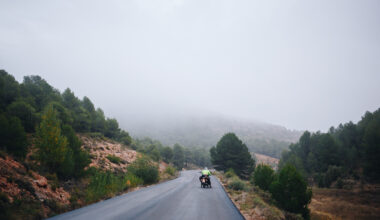Contents
- Introduction
- The Majesty of the Himalayas
- Pre-Ride Preparation
- On the Road: Techniques & Tips
- Local Encounters and Insider Stories
- Conclusion
- FAQs

1. Introduction
Riding in the Himalayas during winter isn’t for the faint of heart—it’s a transformative experience. In this post, I share my first-hand experiences and offer practical advice for riders eager to face the snowy peaks. Whether you’re a seasoned motorcyclist or a beginner looking for adventure, read on to discover the magic and challenges of Himalayan winter riding.
2. The Majesty of the Himalayas
Imagine a landscape where towering snow-capped peaks meet icy winds, and every turn of the road reveals a new panorama.
- Scenic Splendor: The Himalayan roads are framed by shimmering ice and frost-kissed trees. Each curve offers breathtaking views that make every mile memorable.
- Emotional Connection: There’s an almost spiritual quality to riding in such an environment—one that leaves a lasting impression on your heart and mind.
3. Pre-Ride Preparation
Preparation is key when tackling the challenging Himalayan winter.
- Bike Check: Ensure your tires have ample tread and that your brakes are responsive. A thorough check of your battery, fluids, and chain is essential.
- Gear Up: Invest in quality winter riding gear. I recommend moisture-wicking base layers, insulated mid-layers, and a windproof, waterproof outer jacket. Heated gloves and a full-face helmet with an anti-fog visor are also must-haves.
- Mental Readiness: Embrace the challenges ahead by planning for potential delays and unexpected weather changes. A calm mind is your best companion on icy roads.
4. On the Road: Techniques & Tips
The journey demands both caution and confidence.
- Smooth Handling: Avoid sudden acceleration or braking; smooth, gradual movements are essential for maintaining traction.
- Defensive Riding: Always keep a safe distance from other vehicles, and be prepared for unexpected turns or icy patches.
- Adjusting to Altitude: As you ascend, the air gets thinner, and engine performance can vary. Monitor your bike’s response and adjust your riding style accordingly.
5. Local Encounters and Insider Stories
One of the greatest pleasures of Himalayan riding is the people you meet along the way.
- Village Tales: I once stopped in a small mountain village where local riders shared secrets about hidden routes and safe spots during heavy snowfall.
- Personal Anecdote: I vividly recall a cold morning when a local family invited me to join them for a steaming cup of tea. Their warmth and hospitality made the harsh winter feel a little more bearable and reminded me of the human connection behind every journey.
6. Conclusion
Riding through the Himalayas in winter is not just a test of skill—it’s a soulful journey into nature’s heart. With thorough preparation and respect for the challenging environment, every ride becomes a cherished memory. Embrace the cold, trust your gear, and let the mountains tell their timeless story.
7. FAQs
Q1: What is the best time to ride in the Himalayas during winter?
A: Early winter months (November to early January) often provide the best mix of scenic snow and manageable weather.
Q2: How do I keep my bike’s battery from dying in the cold?
A: Regular maintenance, using a battery tender, and ensuring the battery is fully charged before departure are essential steps.
Content generated with the help of ChatGPT.



